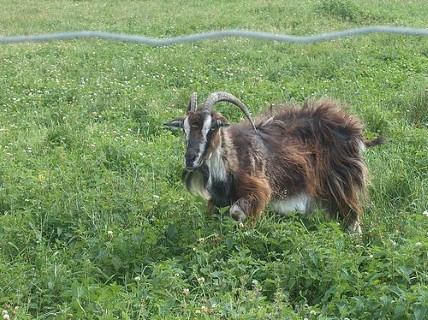The ancestors of today’s Danish
Landrace Goats have been in Denmark since 3400 BC, however, this sturdy breed
has seen a lot of cross breeding which has left the number of true Danish
Landrace Goats rather limited.
At the beginning of the 20th
century, many were crossed with goats from the German Harz region and Saanen. After
world war II many Danish Landrace Goats were used as recipients for embryo
transfer of Angora or Boer goats or for crossbreeding with Boer goats for meat
production.
Today most Danish breeders keep
small non-commercial herds for home consumption of milk, cheese and meat or for
hobby purpose, with the exception of a few commercial milk producers.
The Danish Landrace is a medium
to large milking goat with an average annual milk production of 800 liters. They
short to long haired and they develop a thick hair coat during winter, which
protects them well against cold weather. Males weigh around 80 kg and weight
around females 58 kg. Most are horned but some are polled. They come in many
colors such as brown, black, white, and blue-grey.
The
Danish Landrace Goats studbook,
Foreningen for Danske
Landracegeder, was opened in 1982.

